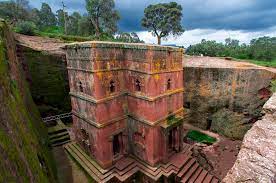The poor fellow to the right (the one half showing) is suffering from an anal fistula, described thusly:
... a small channel that can develop between the end of the bowel and the skin near the anus.
... can cause bleeding and discharge when passing stools - and can be painful. ...
In some cases, an anal fistula causes persistent drainage. In other cases, where the outside of the channel opening closes, the result may be recurrent anal abscesses. The only cure for an anal fistula is surgery. [WebMD]
Nowadays it is called a "pilonidal cyst." At the very least, inconvenient; in many cases, extremely painful, especially when sitting down.
At a time when many men spent long stretches of time bouncing on horseback, these fistula-in-ano (to give it the Latin phrase) were debilitating. Fortunately, soldiers of Edward III's time had a solution in the skill of John of Gaunt's favorite physician and surgeon.
John Arderne (1307-1392) left us very little information about his early life. It seems he was a surgeon in Nottinghamshire. During the Hundred Years War, he probably traveled with the army; his writing suggests a well-traveled man with wide experience of the world as well as medical practices.
He produced the definitive work on treating this particular medical problem. His writing describes the cause and the treatment, and describes the surgical instruments needed for his procedures. He also shows knowledge of Galen & Guy de Chauliac, Avicenna, and Dioscorides.
Arderne was ahead of his time in some ways. He advised opium to dull pain during surgery, and the code of conduct proper for a physician. In the matter of fees, he was fine with charging a rich patient whatever the traffic would bear, but felt that the poor should be treated for free. He was also a great believer in cleanliness, and in not fussing with a wound once treated, but allowing the healing process to proceed untampered with.
That is not to say that he was "modern." He also subscribed to the belief that parts of the body were aligned with astrological signs, and that the time of the year could influence the efficacy of surgery on parts of the body.








